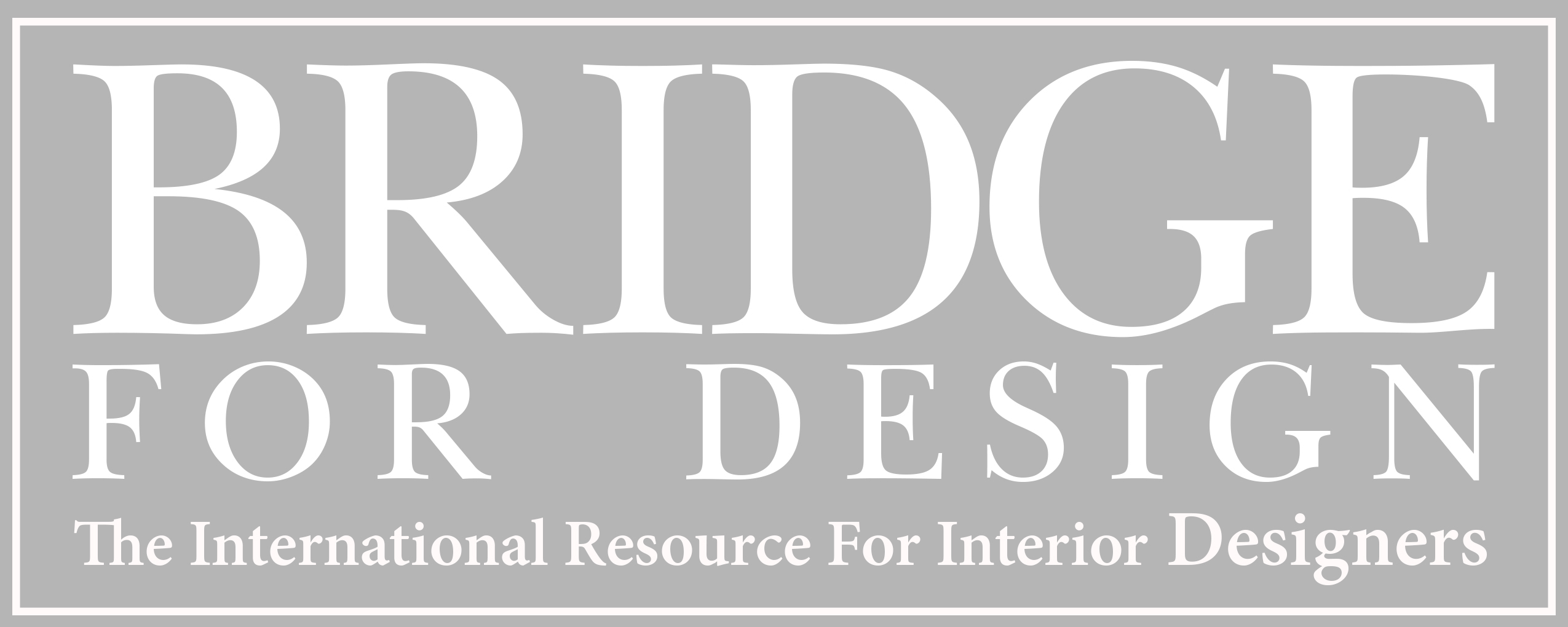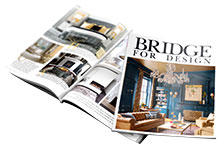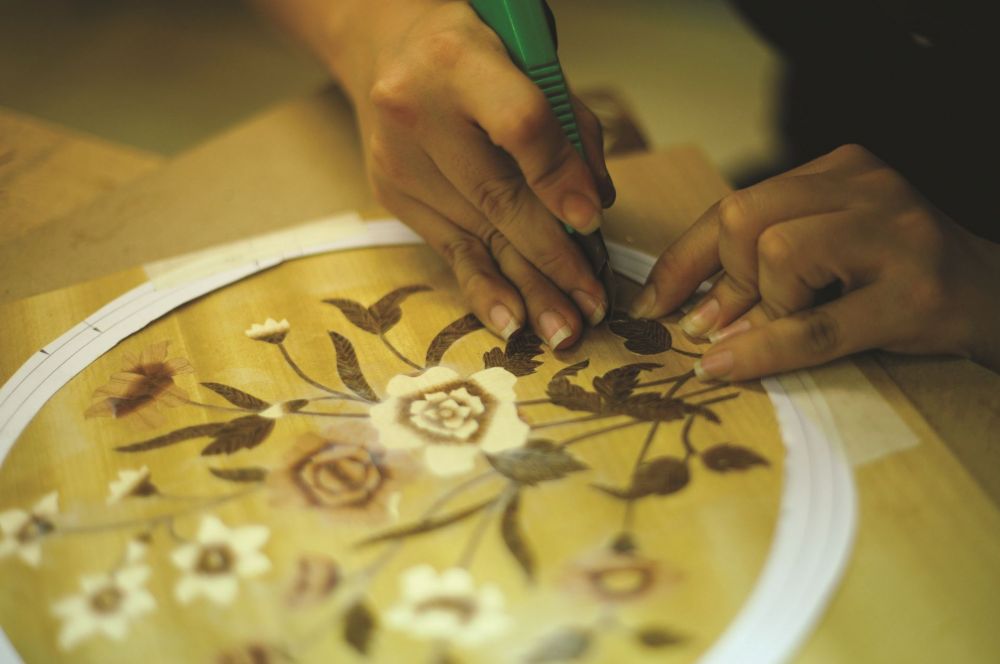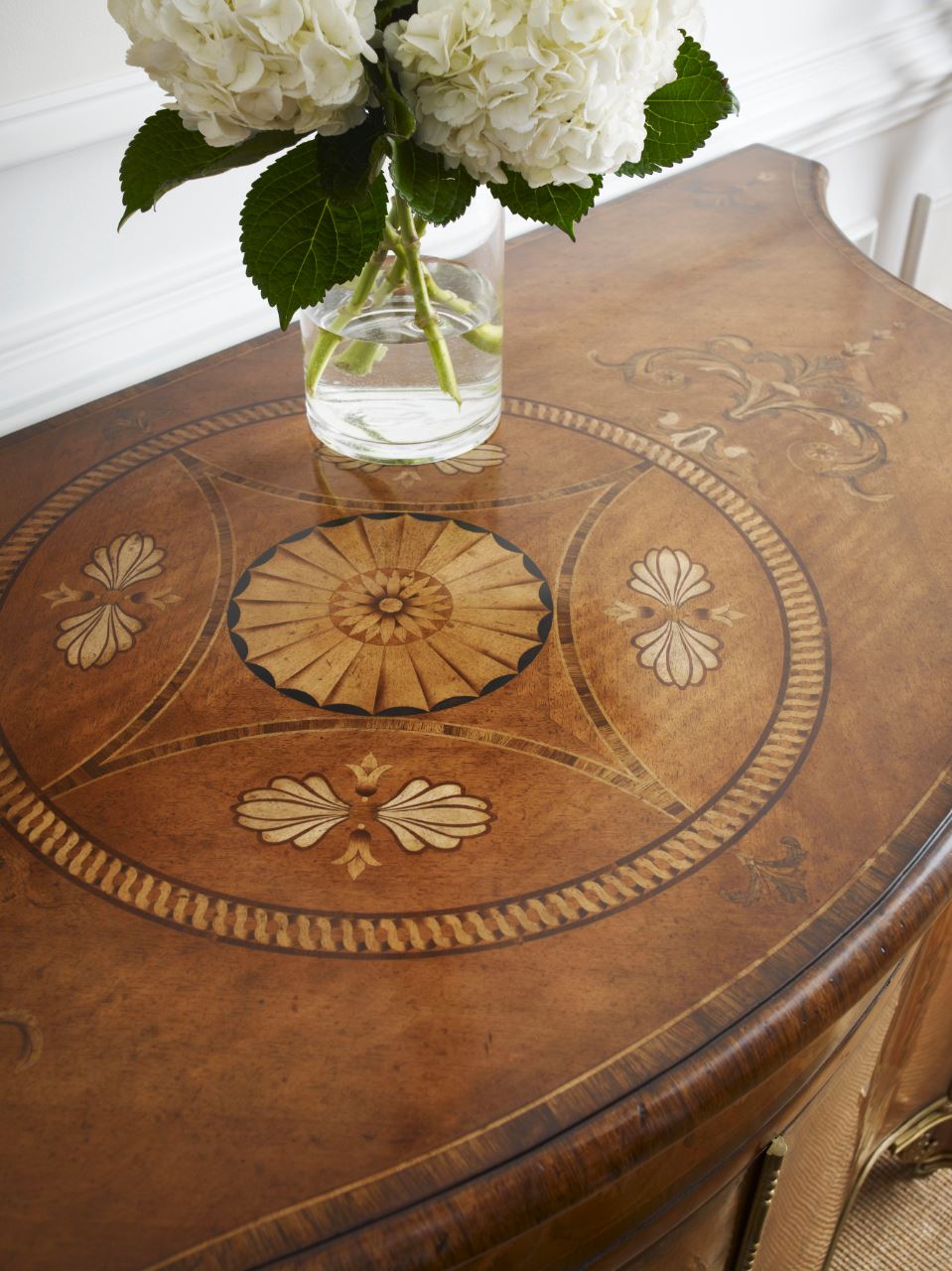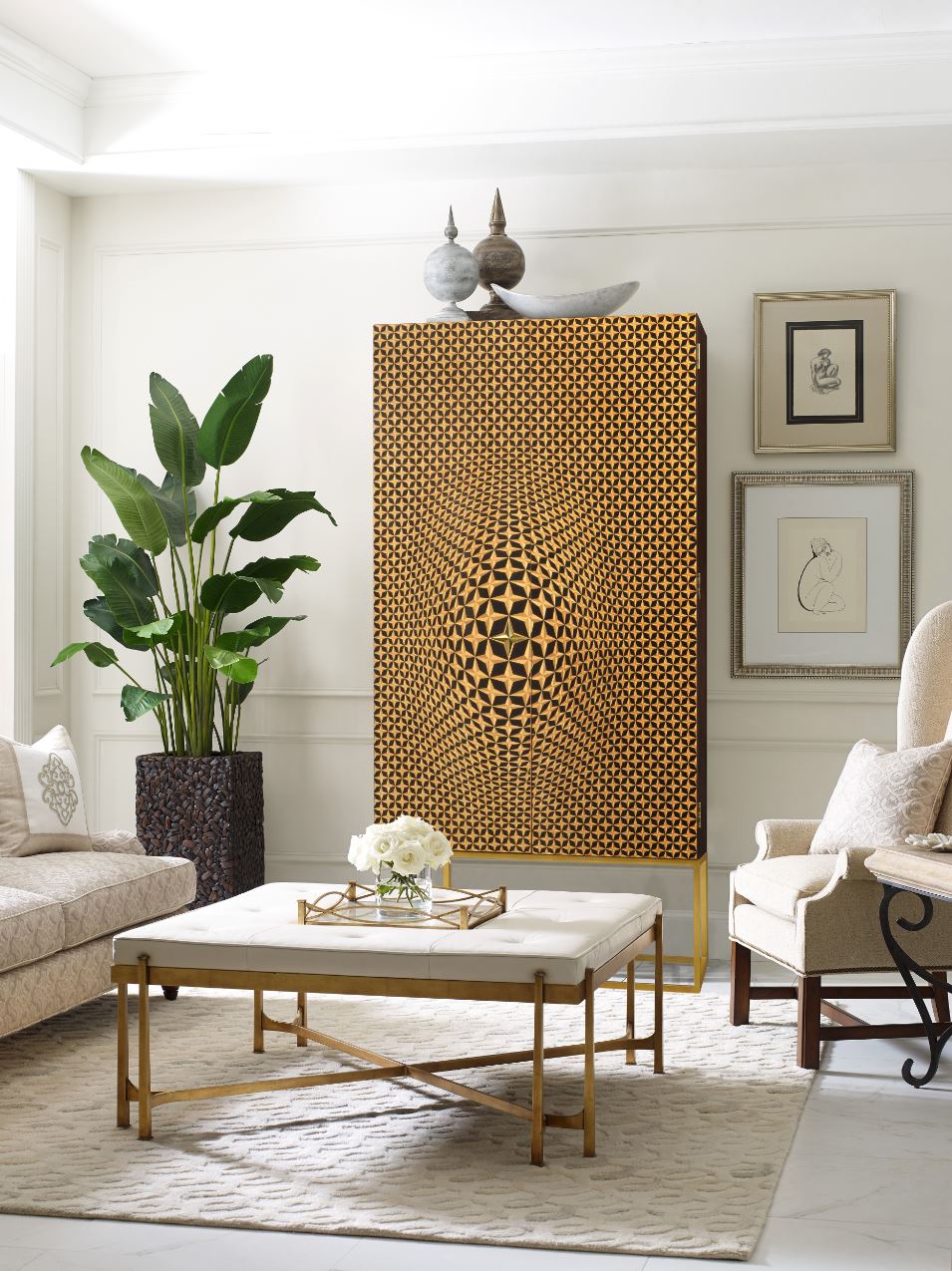Jonathan Sowter, cabinetmaker, is passionate about preserving the Old World techniques of craftsmanship in his designs.‘Marquetry has become a dying art form, thanks to modern technology that has replaced it with digitally printed surfaces that imitate the antique look,’ he says.
‘My goal is to educate and inspire designers and consumers about the art of marquetry by demonstrating its process in various fashions. Before one can create these beautiful decorative patterns, they must first learn the process itself.’
Originating in the early 16th Century in Florence, Italy, marquetry started out as inlaying marble and other stones and eventually transformed into wood-based veneer inlay in Antwerp in the late 16th Century. Shortly after, the French picked up the craft and added their own flourish to create the now iconic ornate floral patterns that marquetry is most commonly associated with.
Achieved by inlaying diff erent woods and other natural materials onto a surface to create a picture, marquetry requires both an artistic and scientifi c approach. Precision and a steady hand are absolute prerequisites; hundreds of hours are poured into the apprenticeship before someone is ready to transfer his or her skills onto a real surface.
‘I’ve always regarded marquetry as a vessel for creativity to explore diff erent motifs, patterns, and materials,’ explains Jonathan Sowter. ‘Wood is the most common medium, but the real beauty - and thus the diffi culty - is incorporating other elements into the wooden surface. I’m always challenging my craftsmen and design team to find unique and unexpected materials to add dimensionality to a piece of furniture. Mother of pearl, brass, and bone are just some of the elements we use to elevate the design.’
Jonathan’s team of craftsmen can create almost any motif and pattern beyond the heavily ornate designs typical of 17th and 18th Century English and French styles. His most current
focus is creating optical illusions using diff erent wood veneers. Referencing trompe l’oeil eff ects, these modern iterations bring a fresh perspective to the Old World technique. One cabinet, in particular, creates the popular fish eye lens using a four pointed star pattern that graduates in size closer to the center.
‘While buyers may not be fully on board with the Rococo or neoclassical style designs quite yet, I think they’ll want elements from those eras, like gilded details, carvings, and inlays that will translate nicely onto modern silhouettes. People are looking for an artisanal connection that demonstrates the authenticity of the craft rather than a digitally printed version,’ he predicts.
